Worldbuilding Through Kitbashing

I recently rewatched the documentary Empire of the Stars about the production of Star Wars and came to the realization that everything about the creation of the first movie, A New Hope, was the product of kitbashing. If you’re not familiar with the term “kitbashing”, it literally means to take pieces from many different model kits and put them together to make something new. The practical special effects artists at Industrial Light and Magic, the special effects wing of Lucasfilm, used this technique to masterfully create starfighters, sets, and props that seemed to truly exist down to all of the little bits of machinery exposed as natural wear and tear of a galactic civil war.
But, as I thought about George Lucas’ influences in crafting this world, I realized that he was kitbashing in his imagination all along. Even a cursory study of his work will reveal that Lucas borrowed things from Kurosawa’s Hidden Fortress, Buck Rogers serials, and Joseph Campbell’s The Hero With a Thousand Faces. By borrowing and modifying preexisting concepts and then synthesizing them, Lucas created a rich galaxy far, far away that has endured in the imaginations of generations.
You too, as a Gamemaster/Dungeon Master/Storyteller can enrich your own RPG adventures and campaigns by worldbuilding through kitbashing and it is actually easy to do.
“That World Doesn’t Interest Me.”
The above statement or variations of it are frequently used as an excuse to dismiss intellectual property-based RPG products. Whether they are fully fleshed out RPGs like Star Wars or the upcoming Tales of Xadia (based on the Netflix hit, The Dragon Prince and a game that my kids are excited for) or a supplemental book like several of the recent D&D books (Acquisitions Incorporated, Explorer’s Guide to Wildmount), there will always be a certain percentage of consumers that look at a property-based product and assume there is nothing of value in that book for them because they don’t watch/read that particular series. However, there is often something in there that is worth a second look for everyone, whether you are a fan or not. A discerning worldbuilder will take those little pieces and find ways to enrich their own campaign setting through a few different methods.
Thematic Synthesis – Evoking Impressions From Other Stories

The easiest way to borrow and kitbash something from another setting is to simply add it to your story and make it your own. This doesn’t require any sort of game mechanic, it is strictly there to add thematic flavor to your story. In a recent game of my own campaign setting, Chronicle, my players were exploring an ancient forest. During their nightly watch, Kodamas from Princess Mononoke appeared and watched the adventurers. I didn’t bother to alter them in any way because I wanted the players to understand that this forest was ancient, alive, and that there was more to it than what they could see. It was a thematic choice.
Plug and Play – Using the Whole Toybox
The next easiest way to kitbash your campaign setting is to take something from another setting within the same rules system and drop it into your world. This is most common with monsters and magic items but it can also apply to classes, 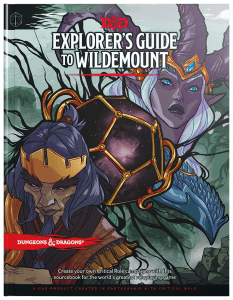 races, and backgrounds. You may have your own carefully-crafted D&D campaign that you have been building with your players for years, but they have never gone on a sea adventure. Rather than the usual, water-based monsters from the Monster Manual, you might try a Swavain Basilisk or Sea Fury from The Explorer’s Guide to Wildemount. Neither of these monsters require you or your players to be fans of Critical Role to enjoy that encounter. In fact, not knowing about the show they come from means that your players are less likely to know a monster’s capabilities!
races, and backgrounds. You may have your own carefully-crafted D&D campaign that you have been building with your players for years, but they have never gone on a sea adventure. Rather than the usual, water-based monsters from the Monster Manual, you might try a Swavain Basilisk or Sea Fury from The Explorer’s Guide to Wildemount. Neither of these monsters require you or your players to be fans of Critical Role to enjoy that encounter. In fact, not knowing about the show they come from means that your players are less likely to know a monster’s capabilities!
I often do this in my Chronicle games when I find something that I really like and don’t feel it needs any modification. Recently, I used a Nergalid from The Explorer’s Guide to Wildemount in a game. I wanted to use a fiend for the final encounter but I have a couple of experienced players who have played in several previous D&D editions and know the usual fiend choices and what they are capable of. But none of them are Critical Role watchers and had no idea what this Devil Toad was! They were surprised when the missing servants they had been investigating turned out to be Husk Zombies created by this surprisingly dexterous, yet bulbous devil.
As a side note for D&D players, D&D Beyond makes this very affordable because you can purchase the monsters, magic items, and character options à la carte rather than having to buy the whole book. This applies to any official D&D product. In the example above, you could also plug and play creatures from a seafaring product like Ghosts of Saltmarsh.
Reskinning – Monster Makeovers
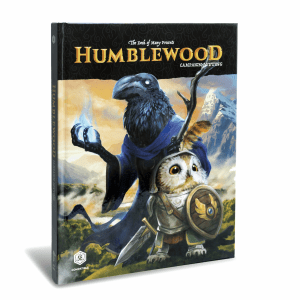 A subset of the Plug and Play method is reskinning. To reskin something, simply take an existing thing and make it look different. There’s no need to change how it works, just make it different. This can be a cosmetic change (red goblins instead of green goblins) or acompletely different creature that just has the same statistics.
A subset of the Plug and Play method is reskinning. To reskin something, simply take an existing thing and make it look different. There’s no need to change how it works, just make it different. This can be a cosmetic change (red goblins instead of green goblins) or acompletely different creature that just has the same statistics.
Another way you could reskin an element from another source would be to take some piece of that world and change up the description to match your world. For example, you could take Alderheart from the wonderful setting of Humblewood and drop it into an unexplored part of your world. Alderheart is a massive tree that contains an entire city full of birdfolk and other bipedal forest animals and exists at the heart of the Humblewood. Perhaps it’s not in a temperate forest in your world, maybe it’s in a jungle instead? You could then combine elements of Humblewood and Chuult to create something wholly new just by reimagining the appearance.
Modification – Tinkering With the System
The next method in our progression requires a bit more work. By taking something from another product within the same system and 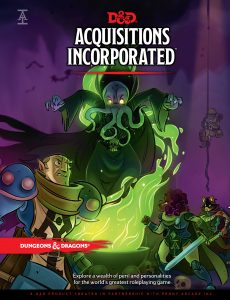 modifying it you can create variety and spice to your own campaign world. Again, the most common way we see this in adventure design is in creatures, non-player characters (NPCs), and magic items. But, this really does apply to all aspects of a campaign setting. Character options like classes, races, and backgrounds would allow you to bring that option into your world but with your own twist. Going a step further and adding in the frameworks that some IP-based products are built on will allow for complexity without the work of devising a whole new system.
modifying it you can create variety and spice to your own campaign world. Again, the most common way we see this in adventure design is in creatures, non-player characters (NPCs), and magic items. But, this really does apply to all aspects of a campaign setting. Character options like classes, races, and backgrounds would allow you to bring that option into your world but with your own twist. Going a step further and adding in the frameworks that some IP-based products are built on will allow for complexity without the work of devising a whole new system.
The current Chronicle campaign I am running involves a mercenary company with a very defined corporate structure and lodge houses that are their own franchises. The characters are operatives within the company and gain ranks through renown. As they gain rank they will earn perks and abilities to reflect their veteran status. Much of that was built off of the Acquisitions Inc model created by Jerry Holkins and the Penny Arcade team then combined with the existing faction/renown rules. I also built out lower-status operatives using the Retainer rules in MCDM Productions’ Strongholds and Followers for those times when we don’t have enough players.
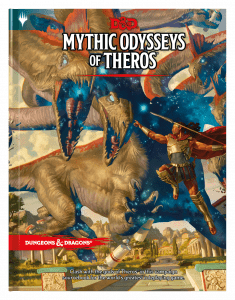 Mythic Odysseys of Theros was a recent campaign setting based off of Magic: The Gathering expansion sets. Those sets had themes of Greek legends. Neither one of these held much interest to me being neither a huge fan of Magic or Greek mythology. But then, I read through the detailing done around the Theros pantheon of gods and specifically the Piety system which allowed their followers to become champions. By following the ideals and performing works for their deity, they may earn favors. This has provided me a fantastic opportunity to flesh out my own pantheon and move beyond the basics of deities as a subclass option.
Mythic Odysseys of Theros was a recent campaign setting based off of Magic: The Gathering expansion sets. Those sets had themes of Greek legends. Neither one of these held much interest to me being neither a huge fan of Magic or Greek mythology. But then, I read through the detailing done around the Theros pantheon of gods and specifically the Piety system which allowed their followers to become champions. By following the ideals and performing works for their deity, they may earn favors. This has provided me a fantastic opportunity to flesh out my own pantheon and move beyond the basics of deities as a subclass option.
Another framework that I have (ironically, given the name) not yet implemented in my Chronicle games is the Hero’s Chronicle setting from Explorer’s Guide to Wildemount. This is a great system to help your players fit their characters into your world. I would recommend all DMs (or even GMs who use other RPG systems) take a look at this and find ways to work it into your players’ character designs. It takes some work on your part upfront to really think about what the details of your world are. But then again, we are talking about worldbuilding!
Conversion – Making it Your Own
The last method requires the most work but it expands the scope of your kitbashing resources. Conversion is taking something from another 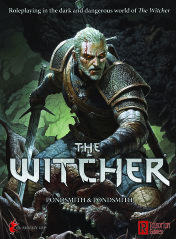 system or from a property without its own RPG system and making it fit into the system you are using.
system or from a property without its own RPG system and making it fit into the system you are using.
Spend a short amount of time in an RPG community and you will see a number of conversion discussions. This usually comes in the form of converting someone’s favorite show or movie character wholesale into RPG stats. (ex. “How would I make Geralt of Rivia from The Witcher in D&D?”) This isn’t really what we’re talking about here. Instead, we would look at an existing property and make some element of that property work in your world. So in the case of The Witcher rather than just making D&D stats for the main character you might think about how magic works in that world and then convert it into D&D or whatever setting you are using. Likewise, you might take D&D things like Beholders and convert them into a different system like The Witcher RPG from Talsorian Games.
To go one step further would be to cross genres in your conversion. What would a Beholder look like in the Star  Wars RPG? Where would it be found in the Galaxy? What would a kitbashed version of Cyberpunk Red look like in the Star Wars RPG? We’ve seen fantasy in cyberpunk with Shadowrun, but what would cyberpunk themes and mechanics look like in a magically-advanced D&D world like Eberron?
Wars RPG? Where would it be found in the Galaxy? What would a kitbashed version of Cyberpunk Red look like in the Star Wars RPG? We’ve seen fantasy in cyberpunk with Shadowrun, but what would cyberpunk themes and mechanics look like in a magically-advanced D&D world like Eberron?
I will caution that the Conversion method can result in staleness and cultural appropriation. There is a chance that if something is converted directly it will feel hollow and stale if there is not a decent explanation for why that exists. Shoehorning a Jedi into your D&D game may feel awkward or out of place. Additionally, if that property you are converting from is based on cultural myths or legends then it may look more like a stereotype when added to your world. Consider using Conversion in conjunction with other methods like Thematic Synthesis and Reskinning to avoid these pitfalls.
Lesser Worldbuilders Borrow; Great Worldbuilders Steal
The term “ripped off” is casually thrown about for works that borrow from other sources. It should apply to plagiarism but has turned into an easy term to call something derivative. Drawing inspiration and turning it into something unique is not ripping off the original source. Making something fresh and interesting with the tools you have is at the root of the creative experience. You as a GM/DM/Storyteller should not be afraid of that when stepping forth on the path of worldbuilding.
IP-based RPG products have been — and always will be — part of the RPG industry and should not immediately be dismissed as inferior or unnecessary. As of the writing of this article, Wizards of the Coast published six major Dungeons and Dragons products in the past year. Of those, three were based on third-party IPs. Clearly there is demand for these products and there is no reason to avoid the possible useful parts they have to offer.
Try these kitbashing techniques out for yourself and see what you can come up with. Let us know how they work for you! Do you use other techniques for kitbashing your world? If so, tell us about them so we can share them with our community!
RPG Products referenced in this article for your own kitbashing inspiration:


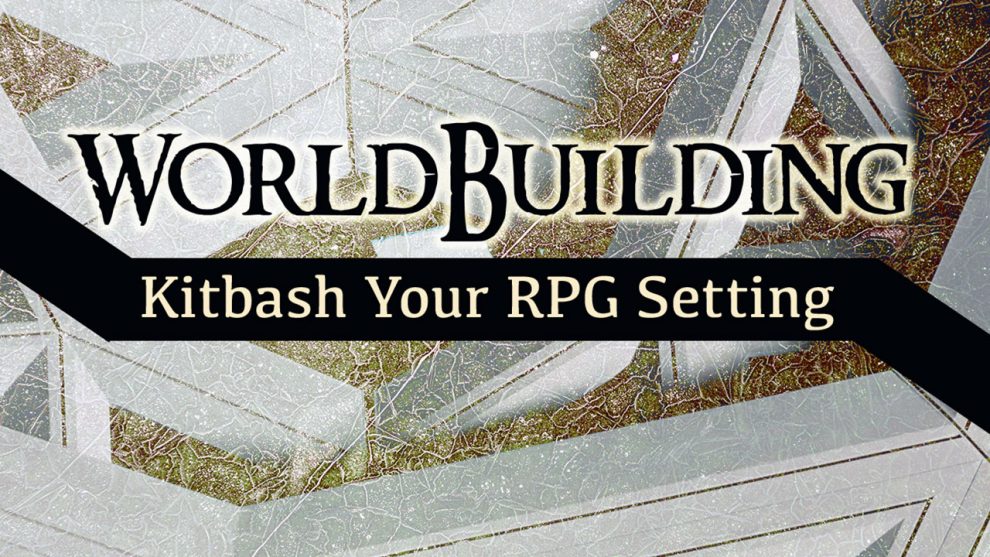
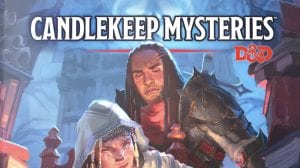
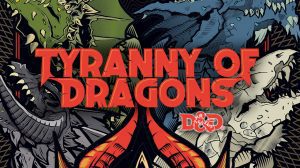

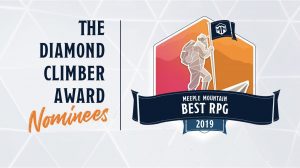




Add Comment